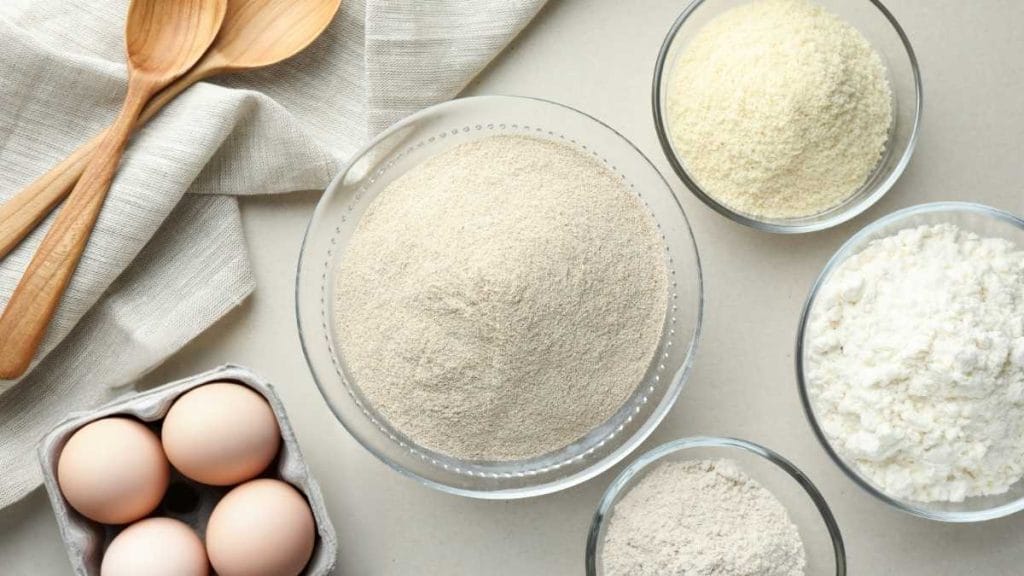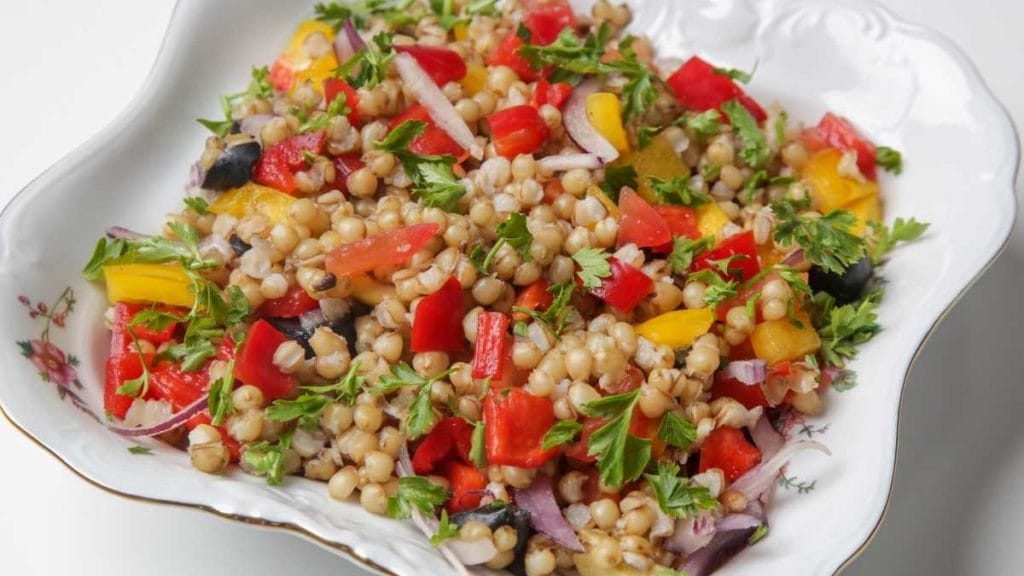Growing up on a farm, I spent many Sunday afternoons checking the crops with my dad. We’d wade through waving fields, stopping occasionally to roll wheat heads in our palms to see how plump and plentiful the kernels were. I mimicked every move, unaware that we were checking what would one day become my breakfast cereal, sandwich bread, and bowl of pasta.
Today, as a food educator, I’m grateful for farmers like my dad—quietly growing the wheat enjoyed in our everyday meals, here and across the globe.

Grown Across Canada
Wheat is one of the most widely grown crops in Canada, especially in the prairies. It is highly regarded both domestically and internationally for its quality, high protein and consistent performance. Among the most popular varieties are hard red spring wheat, ideal for baking and durum wheat, ideal for semolina flour used for pasta and couscous.
Wheat trivia: While genetic modification has been used to help grow some crops more efficiently, there are no genetically modified (GM) wheat varieties grown in Canada.
Is Wheat Good for You?
Despite what you may hear on social media, wheat can absolutely be part of a healthy diet, especially when choosing whole grain wheat. Whole grains like whole wheat have been linked to better gut health, lower cholesterol, improved blood sugar control, and reduced risk of heart disease, type 2 diabetes, and certain cancers.
To better understand why whole grain wheat is so beneficial, here’s a look at what’s inside a kernel of wheat.
The Anatomy of a Wheat Kernel
- Bran – The fibre-rich outer layer. It makes up about 12–17% of the kernel and contains fibre, B vitamins, vitamin E, protein, and minerals like iron and magnesium.
- Endosperm – The largest portion (80–85%) made up mostly of carbohydrates, some protein, and small amounts of vitamins and minerals.
- Germ – A small but mighty part (just 3%) packed with nutrients including protein, minerals, healthy fats, B vitamins, antioxidants, and vitamin E.
When milled, different types of wheat flour are made from various ratios of these components—ranging from whole grain flour, which retains all three parts, to refined wheat flour (like all-purpose flour), where the bran and germ have been removed.

In Canada, most refined wheat flour is required by law to be enriched with specific vitamins and minerals to help support health. Learn more about wheat flour enrichment here.
Types of Wheat Flour and How to Use Them
At the grocery store, you’ll find different types of wheat flour each with their ideal use.
| Type of Flour | Description | Ideal Use |
|---|---|---|
| Whole grain whole wheat flour | Made from the entire wheat kernel (bran, germ, and endosperm), high in fibre and nutrients. | Hearty breads, sandwich loaves, and muffins with a dense, nutty texture. |
| Whole wheat flour | Similar to whole grain, but in Canada, up to 5% of the kernel (mostly germ) can be removed. | Fibre-rich baking like muffins, quick breads, and breads. |
| All-purpose (white) flour | Refined flour with the bran and germ removed. In Canada, all refined white flour is enriched with folic acid, iron and three B vitamins. | Cookies, muffins, quick breads, pancakes, cakes, pie crusts, biscuits, and thickening sauces – it really is all-purpose! |
| Bread flour | Refined flour from hard wheat varieties higher in protein; ideal for strong gluten development. | Recipes needing structure and durability like breads, pizza dough, and bagels. |
| Cake and pastry flour | Refined flour milled to a fine texture from soft wheat with less protein to create tender, delicate results. | Cakes, cupcakes, muffins, pastries, pie crusts, biscuits, and tender cookies. |
| 00 flour | Refined flour milled to an ultra-fine texture from hard wheat with a high protein content; highly absorbent. | Recipes needing stretch and softness like pizza crusts, focaccia, flatbreads, artisan breads, ciabatta, homemade pasta, and perogies. |
| Semolina | Refined flour milled to a coarse texture from hard durum wheat. It has a natural golden colour and high protein content. | Pasta, gnocchi, couscous, textured crusts on breads and dusting pizza peels. |
A Word About Gluten
All wheat flours contain gluten, a protein that helps dough rise and hold its shape. Gluten is safe for most, but those with celiac disease or gluten sensitivity should avoid wheat and other grains like barley and rye. For gluten-free baking, choose certified gluten-free flours like oat, rice, corn, or buckwheat.

A Canadian Staple Worth Celebrating
Wheat plays a vital role in Canadian agriculture, nutrition, and daily meals. From pasta to toast to comforting grain bowls, wheat is part of the Canadian food story, nourishing us every step of the way.


